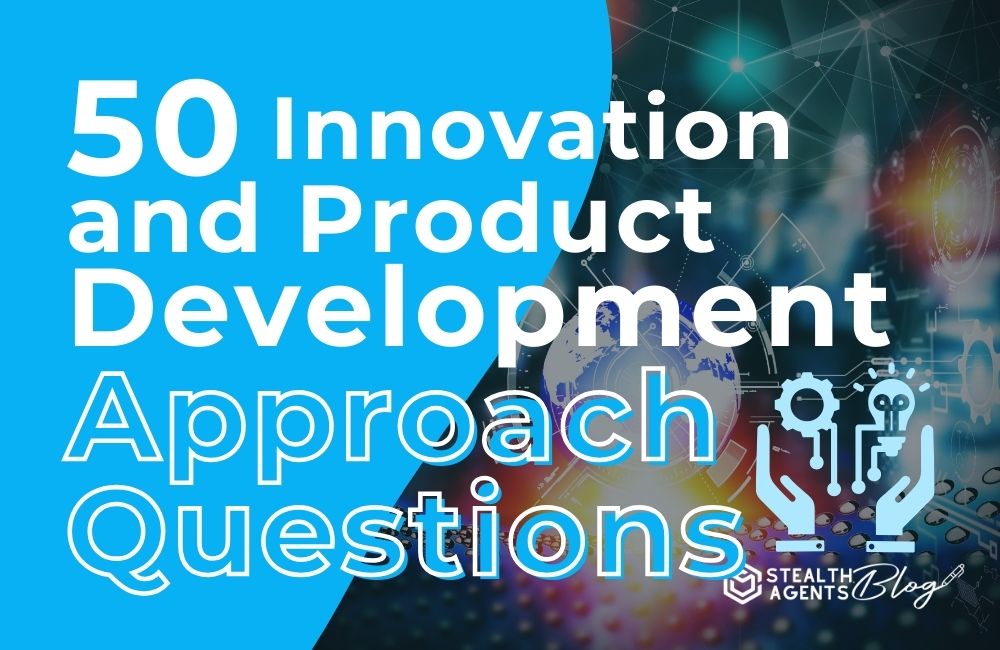50 Innovation and Product Development Approach Questions
When it comes to spurring innovation and crafting products that truly cater to the needs of your audience, asking the right questions can be as crucial as finding the right answers. Whether you’re a seasoned entrepreneur, a fledgling startup, or even an individual curious about the development process, these 50 questions are designed to nudge you towards breakthroughs in innovation.
Introduction to Innovation and Product Development
Innovation is the lifeblood of progress. It’s what transforms dreams into ideas and ideas into tangible products and services that change the world, bit by bit. Yet without a solid, inquisitive approach, even the most game-changing ideas can falter.
Here, we’re not just talking about any questions; we’re talking about powerful, transformative interrogations that turn vision into reality. Think of these queries as seeds: plant them within your teams, your projects, your strategies, and watch the fruits of innovation grow.
You may be asking: why is this list different? Well, because each question here is a drop of fuel for the fire of innovation. They’re stripped from the corporate mumbo-jumbo and built on the raw materials of real-world thinking. It’s a list designed to encourage, provoke, and propel—the building blocks of true innovation.
50 Innovation and Product Development Approach Questions
-
Does our product solve a real problem?
-
What’s the ‘one thing’ that’ll make or break our product?
-
Can we simplify further without losing core value?
-
Who might not like our product, and why?
-
How does our development process integrate customer feedback?
-
What are our competitors not doing that we could do better?
-
Is our product’s value proposition clear to a 10-year-old?
-
How sustainable is our product’s market differentiation?
-
What strategies do we have in place for a suddenly changing market?
-
Are we underserving any market segments we could better reach?
-
Can we make our product faster, slower, smaller, bigger – just different?
-
How does our product speak to a cultural or societal trend?
-
What’s our “wow” feature that gets people talking?
-
Are our customers vendors, partners, or something else?
-
Would changing our pricing structure open new markets?
-
What can we learn from products in completely different industries?
-
Are we afraid to take a big risk, and should we be?
-
How often do we need to update this product to stay relevant?
-
Are our roadmaps adaptable enough for unforeseen disruptions?
-
Do we use a ‘test small, learn fast, fail quickly’ approach?
-
What’s the most unusual application of our product we’ve seen?
-
How does our customer acquisition strategy align with our product’s nature?
-
Is there a keystroke, a click, a conversation that could make our product more intuitive?
-
Can we measure delight, not just utility, in our product’s user experience?
-
How do we want our customers to feel after using our product?
-
What part of our product is most likely to need a ‘Version 2’?
-
Could integrating artificial intelligence improve our product’s user experience?
-
Is our marketing message aligned with the actual experience?
-
Can our product inadvertently cater to more than one market?
-
What policy constraints might arise from the use of our product?
-
If we had to cut a feature, what calculation or conversation would guide us?
-
What’s the economic tipping point our product could influence?
-
Can we create ecosystems around our product, rather than standalone solutions?
-
What needs to be true for someone to choose our product over anything else?
-
Are there uses for our product we didn’t foresee that we should prepare for?
-
Is there a way to make our product more inclusive and accessible?
-
How might we design our product for longevity and minimal environmental impact?
-
Where could an unanticipated cost occur when using our product?
-
What part of our innovation process could be outsourced or crowdsourced?
-
Are we capturing enough data to make informed decisions?
-
If we met a customer five years from now, what would we want them to say about our product?
-
How can we distribute our product in the most unconventional, effective way?
-
What are the one or two actions that could dramatically increase use of our product?
-
Can we partner with an unexpected company to diversify our reach?
-
Are we prepared to support the growth surge if our product goes viral?
-
What’s the most persuasive argument against our product’s success and how do we counter it?
-
Could a more nimble, microservice architecture make our product more adaptable?
-
How can we infuse storytelling into our product’s brand narrative?
-
Can our product elicit an emotional response, and if so, what is it?
-
If money and time were no object, what would our product look like?
Conclusion
Each question here opens a door in the closed-off labyrinth of innovation. Together, they set a challenge: to think bigger, dive deeper, and not just adapt to change, but to be the catalyst for it. This isn’t just for the product developers or the bigwigs in the company; it’s for anyone who’s ever had a dream they wanted to see flourish.
So take these questions, let them percolate, and see where they lead you. After all, innovation is just a series of smart, thoughtful pivots that turn the ordinary into the extraordinary. And these questions are your first step in that dance.











